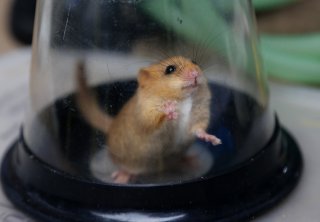These Genetically Engineered Mice Are 4-Percent Human
Could they help us study and defeat diseases?
In what seems like the plotline of a sci-fi flick, scientists have successfully mixed the genetic building blocks of two different animal species.
In this particular case, which was detailed in Science Advances, scientists at the University of Buffalo injected human stem cells into mouse embryos. About two weeks later, the research team witnessed more mature mouse embryos that contained high levels of human cells.
In one mouse embryo, 4% of the cells were actually human. With a little help, human stem cells can knit themselves into the nascent tissues in the mouse embryos, populating the developing liver, heart, retina and blood.
Human red blood cells were particularly abundant in these mouse embryos, and a small number of human cells were apparent in tissue that will form a brain, the researchers found.
“We know that up to 4% of the total number of cells in the mouse embryo were human cells,” the study’s author Jian Feng, who is a professor of physiology and biophysics at the University of Buffalo, said in a release.
“This is a low estimate because we cannot quantify the large amount of human red blood cells generated in the mouse embryo.”
Previous efforts in creating humanized mice resulted in about 0.1 percent of cells containing human material. Achieving 4% is indeed a huge advancement, and the team is hoping that the knowledge gained from this study will one day help doctors and scientists save future human lives.
Such cross-species hybrids, known as chimeras, could play a large role in the testing of life-saving treatments, and it is even conceivable that certain animals like pigs could grow human organs for use in transplants.
It could also be possible to tap into the new method to produce mice with even more mature human red blood cells. Such mice would be very useful for studying infectious diseases like the novel coronavirus.
“This is fundamental research that allows us to use the mouse embryo to help us better understand human development,” Feng said.
“Further development of our technology could enable the generation of even larger quantities of specific types of mature human cells to allow us to create more effective mouse models to study diseases that gravely affect humans, such as malaria or COVID-19.”
Ethen Kim Lieser is a Science and Tech Editor who has held posts at Google, The Korea Herald, Lincoln Journal Star, AsianWeek and Arirang TV. He currently resides in Minneapolis.
Image: Reuters.


